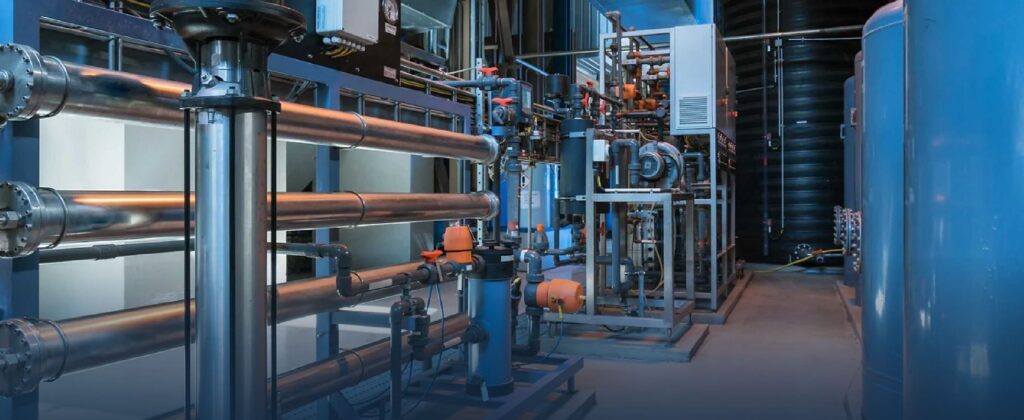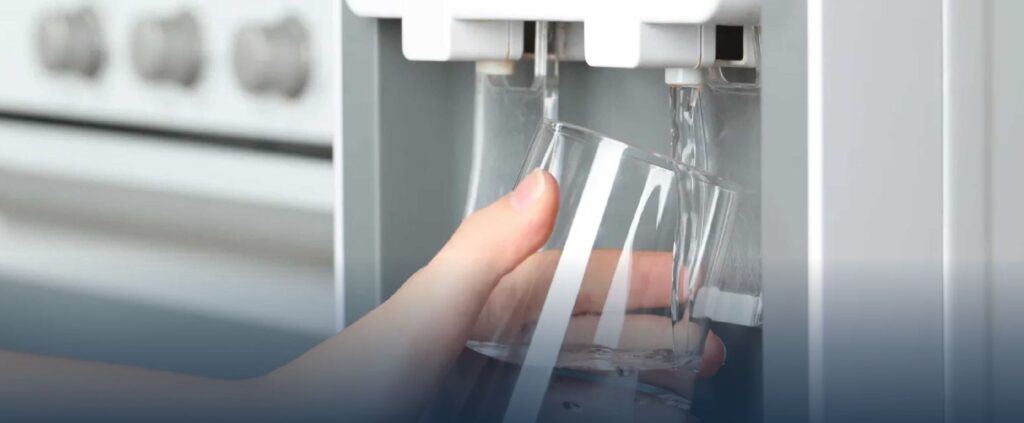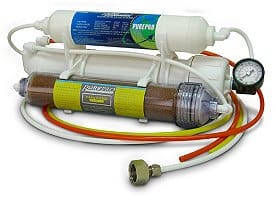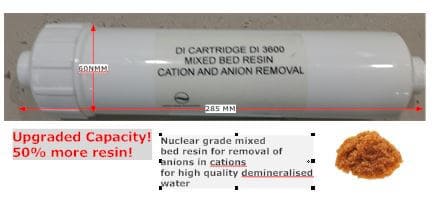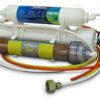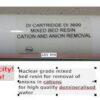Description
Description: Aquarium RO DI Filter- FS201-DI
Clean, pure water is a priority for all fish. No equipment is more effective in helping create ideal water conditions as Reverse Osmosis (RO) units. These units filter out up to 99% of chemicals found in tap water by forcing tap water through a semi-permeable membrane that removes 90-99% of tap water impurities. The result is water that is free of minerals and other contaminants.
Our Aquarium RO Systems meet stringent standards and far exceeds the quality of systems from other manufacturers. A wide variety of options ranging from economy 3-stage units to top of the line 5-stage RO/DI units are available to suit your exact needs.
Deionisation (DI) filters
Ion exchange technology takes the water quality to a significantly higher level than RO alone. It is an excellent selection for reef enthusiasts and other serious aquarists, especially those who live in areas with exceptionally high levels of phosphates in their tap water. Our unit includes: sediment pre-filter, carbon pre-filter and a TFC (Thin Film Composite) membrane, Deionisation (DI) post-filters are supplied in clear filter housings. The post deioniser takes the small percentage of contaminants that the membrane could not remove and filters this to greater than 99.99% purity . It will provide you with a TDS of zero. Conductivity attainable less than 0.1uS/cm or resistivity of close to 18 meg.ohm
Build-in Pressure Gauge
The minimum operating pressure for a RO (reverse osmosis) unit is 50 psi (pounds per square inch). This unit has a build-in pressure gauge to monitor the operating pressure of the system. If the operating pressure is too low, an RO pressure boosting pump can be added to increase the operating pressure to the ideal range.
Why do I need RO water ?
Tap water often contains impurities that can cause problems when added to an aquarium. These include phosphate, nitrate, chlorine, and various heavy metals. High levels of phosphate and nitrate fuel aggressive algae growth, and copper, often present in tap water due to leaching from pipes, is highly toxic to invertebrates. Because RO filters remove practically all of these impurities, they are becoming more popular among aquarists, particularly marine hobbyists.
Features-Aquarium RO DI Filter:
- Reverse Osmosis(RO) Technology
- Activated carbon and sediment filtration
- Three Color Coded Tubing For System Connection.
- Include Common Faucet Adaptor For Easy Installation.
- 100% Factory Tested and Sterilised.
- Includes Installation Instruction.
- Deionisation (DI) Cartridge.
- Easy to Use and Store
- Pressure Gauge
- Booster Pump For Low Pressure Needs (Optional)
- 80GPD, 100GPD, 200GPD Membrane (Optional)
- 50GPD membrane. (Made in USA)
Questions about DI -cartridges
Why does my new colour changing deionisation cartridge produce water with a fishy smell?
Type 1 Strong based Anion resins release very low levels of amines (trimethylamine). A very low threshold of 5 PPB or greater will cause a fishy odour to be noticeable. The odour is most noticeable when the resins are new and when they are at or near the point of exhaustion. It is therefor recommended to flush a new DI- cartridge for a few hours to reduce the off-odour, however the small amounts of amines released will not harm the fish.
Why does the DI-cartridge not fill all the way with water?
RO water is produced at a very slow rate, which is dependent on the water temperature, pressure and size of the membrane. The water trickles into the DI housing (on the outside of the DI cartridge) and is forced up through the center, leaving the DI housing.
There are two reasons that this housing will not fill with water. First, air trapped in the housing will not allow it to fill. Or, if the product line leaving this housing is sloped down, then you are gravity draining the water out of the housing. In either case, no harm is done to either the water or the DI cartridge.
Why does my DI-cartridge have a such a short life?
One of the most common reasons for low DI cartridge life is high carbon dioxide content in low pH waters. CO2 levels in low pH waters like well waters can be as high 50-100 ppm. Since carbon dioxide is a small dissolved gaseous molecule it passes right through the reverse osmosis membrane. Carbon dioxide is weakly ionised and is not detected in conductivity measurements, however it occupies the anion-exchange sites in the deionisation cartridge significantly reducing their expected life-time. Therefore, CO2 removal from RO product water significantly enhances the life-time of the deionisation cartridges.
Good CO2 levels are 15 -35 ppm. CO2 levels can be lowered by dispersing fine air bubbles into water with air stone or venturi side injection. Refer to Henry’s law .
To determine CO2 levels click on the link below:
How to determine CO2-levels:

